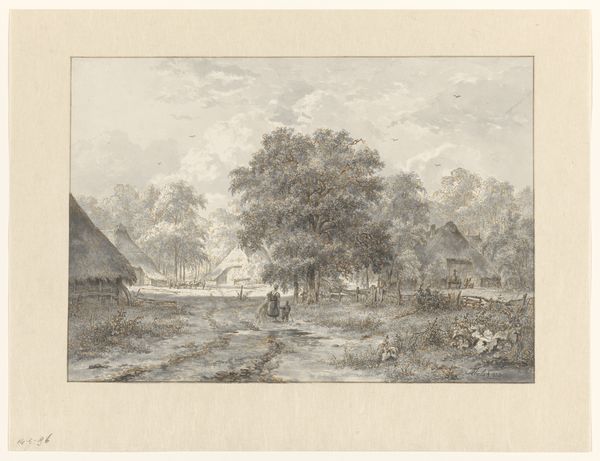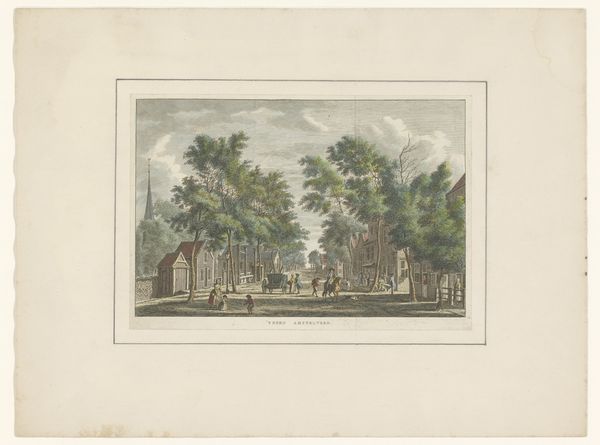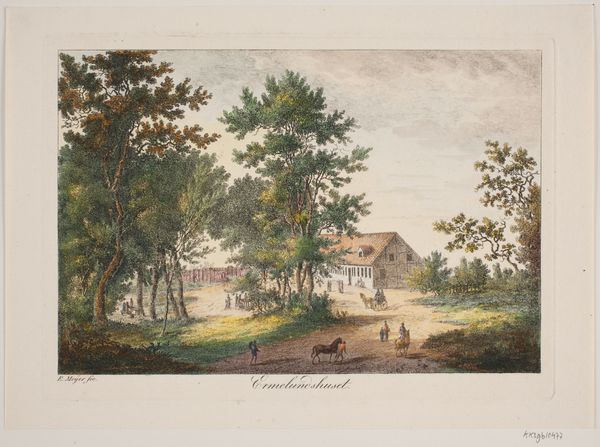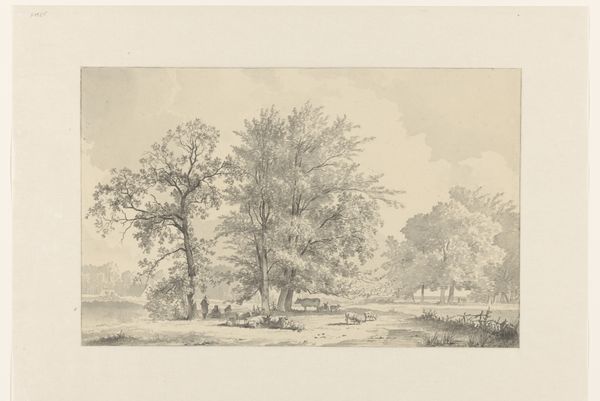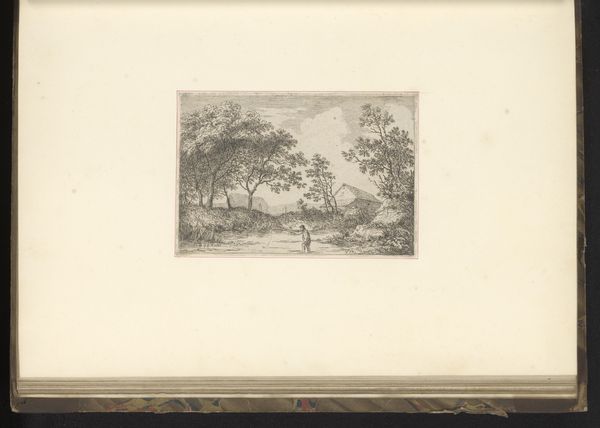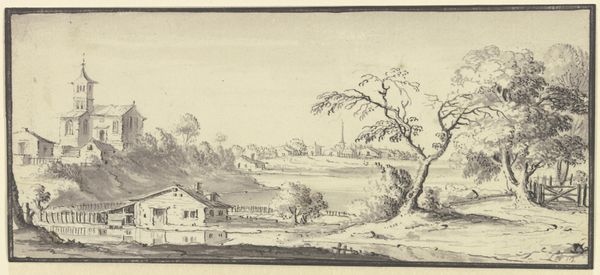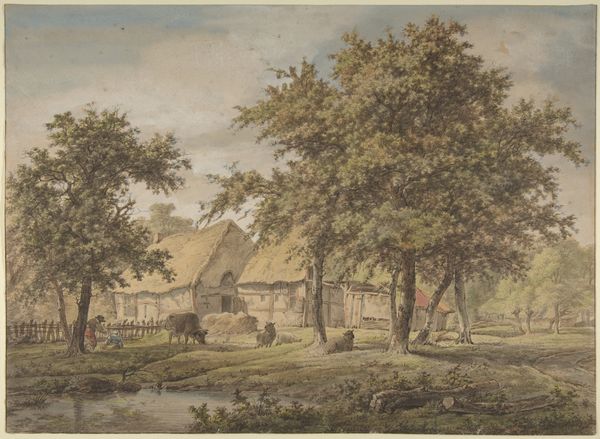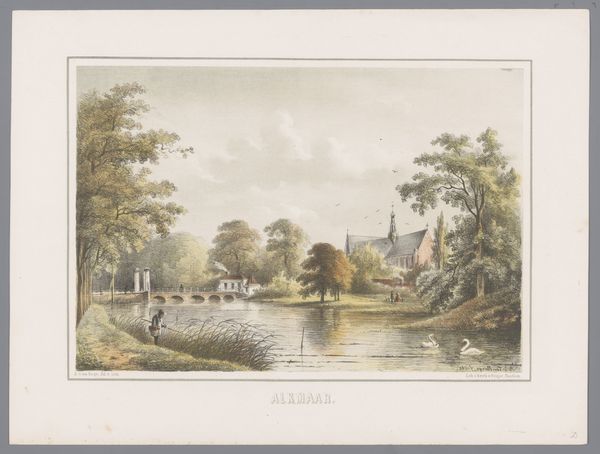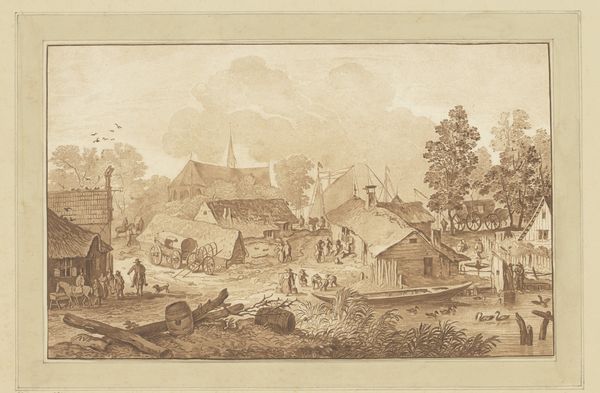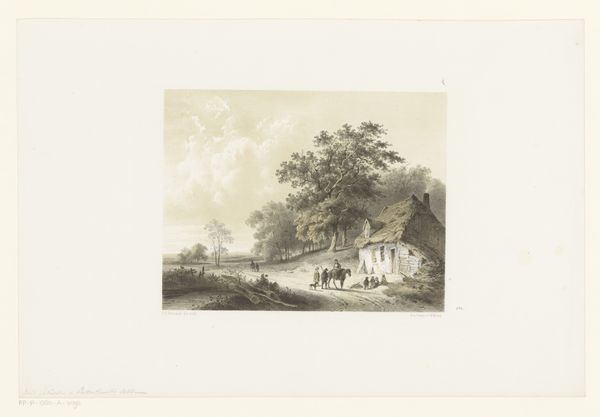
plein-air, watercolor
#
dutch-golden-age
#
plein-air
#
landscape
#
watercolor
#
romanticism
#
cityscape
#
watercolour illustration
#
watercolor
Dimensions: height 147 mm, width 317 mm
Copyright: Rijks Museum: Open Domain
Curator: The artwork before us is entitled "Gezicht op een Nederlandse nederzetting in Indonesië," or "View of a Dutch Settlement in Indonesia," created sometime between 1843 and 1845 by J. G. van der Does. It’s rendered delicately in watercolor. Editor: It strikes me as strangely…quiet. A stillness that’s almost unsettling. The watercolor lends a softness, a sort of dreamlike quality to a scene that, knowing history, likely wasn’t so idyllic for everyone involved. Curator: Precisely. Watercolors, popular for their portability, were often employed by artists documenting landscapes and settlements. In this instance, we see the ordered layout of a Dutch colony, seemingly tranquil but pregnant with implied narratives of power. Look at the visual hierarchy; the imposing architecture set against the natural, less structured foliage. What could that imply? Editor: That tension is palpable, right? Colonial order imposed on the perceived wildness of the land. The buildings have this stark, geometrical presence that feels very much about asserting dominance. Yet, there’s a haze, a diffusion of light – almost a reluctance to show every harsh line. Like a dream one has about home. Curator: Indeed. The subtle use of color tells its own story. The greens and browns, although muted, give life, while the white of the buildings, under the tropical light, might denote not only cleanliness and order but perhaps also a visual statement of difference, a symbolic marking of foreign presence. Editor: And did they use local resources, the landscape for the building's placement in particular, in creating the Dutch imprint, or did they stick solely to home design aesthetics? Curator: It’s difficult to determine, perhaps impossible in such a work. The aesthetic certainly leans heavily toward European models and perspectives. Editor: Yes, you are right. The detail in the architecture, the strategic arrangement, they whisper stories of control and reshaping of space. Almost like etching your own memory onto a landscape that already held centuries of its own. It really is beautiful and quite thought-provoking, a mirror to the push and pull of seeing oneself in unfamiliar places. Curator: A delicate lens through which to view a complex, often brutal history. It's art that subtly confronts us with our own perceptions and preconceptions. Editor: Agreed. It makes you wonder whose perspective really gets etched into the grand narrative. Thanks for bringing this artwork to my attention. It has been an insightful analysis of memory, influence and change.
Comments
No comments
Be the first to comment and join the conversation on the ultimate creative platform.
